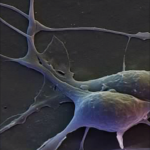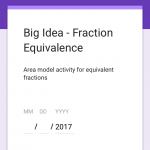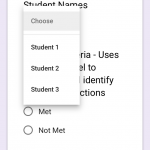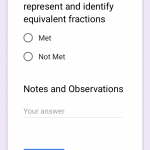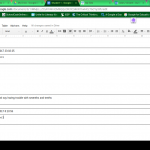The vision of 21st-century or modern learning environments foster particular habits of mind which include: communication, citizenship, equity, creativity, collaboration and critical-thinking. This is what we expect to observe in math classrooms. As mathematics teachers move in this direction, we are faced with important questions about assessment. If young mathematicians are socially constructing knowledge through collaborative inquiries, how we can capture individual critical-thinking and creativity? How can we triangulate mathematical assessment data? With an increase in collaborative tasks and fewer individual pencil/paper assessments, how can we leverage technology to collect the observations and conversations we need to assess learning? How can students leverage technology to capture their own thinking for self-assessment? What aspects of technology can promote assessment for/as learning? How can teachers leverage technology to create and deliver timely and descriptive student feedback? And ultimately, how will changes in assessment lead to higher levels of confidence and achievement in mathematics?
The Ontario Ministry of Education’s Growing Success document states, “Teachers will obtain assessment information through a variety of means, which may include formal and informal observations, discussions, learning conversations, questioning, conferences, homework, tasks done in groups, demonstrations, projects, portfolios, developmental continua, performances, peer and self-assessments, self-reflections, essays, and tests.” We will investigate ways for students and teachers to gather assessment information using technology. For example, we will examine applications like Seesaw (http://web.seesaw.me/) and Recap (https://app.letsrecap.com/). Using a 21st-century teaching and learning framework, we will decide if these technologies can be used in a mathematics classroom to improve and diversify assessment practices.
Team Members
Vincent Allen
Peel District School Board
Roxanne Wright
Peel District School Board
Harpreet Puar
Peel District School Board
Professional Learning Goals
- We learned to refine our assessment practices. Specifically, we learned to create Learning Maps which included Big Ideas, Learning Goals and Success criteria.
- We learned that Learning Maps allow us to effectively triangulate data
- We explored technologies that were most effective and efficient in gathering and triangulating data in our teaching/learning environments
- We engaged in professional dialogue and professional learning in a variety of online formats to investigate assessment and the use of technology in mathematics
Activities and Resources
Book Twitter Chats
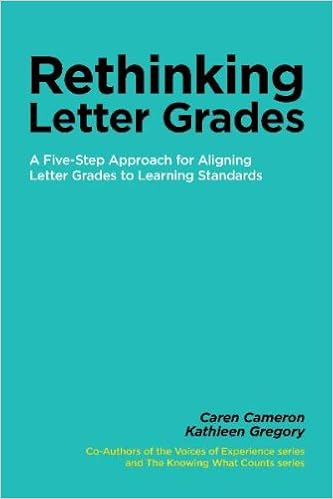
- This book was our first introduction to Learning Maps
- Authors web page and digital tools: http://www.quio.ca/learning-map/
- This book helped us deepen our understanding of Formative Assessment
- During our Twitter chat on this book we make connections to Growing Success
- http://www.edu.gov.on.ca/eng/policyfunding/growSuccess.pdf

- This Twitter Chat gave us a chance to think about how we could leverage technology to provide feedback
Webinars
The following webinars helped us explore specific technologies for gathering assessment data,
- Capturing Student Thinking in Math
- https://www.otffeo.on.ca/en/learning/otf-connects/resources/capturing-student-thinking-in-math/
- Leveraging Technology to Support Learners in Math
- http://rms.thelearningexchange.ca/session-descriptions/
- Making Student Thinking Visible Using Tech Tools
- https://www.bigmarker.com/GlobalMathDept/Making-Student-Thinking-Visible-Using-Tech-Tools
Professional Learning Networks
We collaborated with our instructional coaches, math leads, technology coaches, twitter peeps, grade teams and fellow Peel teachers. We shifted from explorations and trials of individual technologies to first GAFEs (most specifically Google Forms) and then the new Peel District School Board assessment platform called the Student Learning Notebook. Working with GAFEs and the Student Learning Notebook we learned how to use technology to transform our assessment methods. Assessment moved from a focus on summative testing to the triangulation of formative assessment data based on Learning Maps, Big Ideas, Learning Goals and Success Criteria.
Individual Technologies
Here is a sample of the technologies we looked at:
| Recap |
| Freshgrade |
| Sesame |
| Seesaw |
| GAFEs |
| Knowledgehook |
| GoFormative |
There are an ever evolving mix of technologies available for use in the math class to capture student thinking. The webinars we have included in the previous section have even more examples of ways to capture text, audio, pics, video and multimedia formats of student thinking.
Unexpected Challenges
At first, we explored third-party applications to capture assessment data. What we soon realized was that technology in itself was not the answer. There are a variety of unique applications available to teachers to capture evidence of student thinking, but we soon realized that what we needed was a platform that could help us triangulate data (no matter where it came from – an app, paper and pencil, a conversation, etc.). In the beginning, we tried various applications but soon realized that in the rotary learning environment (we are math teachers teaching three classes per day in 400minute periods) our greatest need was to efficiently organize and then triangulate assessment data to guide instruction and eventually lead to authentic summative evaluation. Furthermore, requiring every student to record their thinking in some way that required us to watch or listen to later was not efficient or sustainable.
With these parameters in mind, we found ourselves exploring Google Forms. As students collaborated and engaged in meaningful and rich math tasks, we circulated, listened and questioned. On our iPhones and iPads we accessed a Google Form setup with Learning Goals and Success Criteria for the activity. Using a student drop-down menu, we selected a student and then proceeded to judge success criteria by clicking “met” or “not met” based on our observations/conversations. This data was automatically deposited into a Google Doc specifically assigned to the student. Later we could triangulate the observations/conversations/products by reviewing the met/not met data captured in the Google Doc. (In the Resource section below, you can see screenshots of the process. We created two instructional videos explaining how to make the Form and link it to Google Docs. We can share these videos with you if you contact us.)
Later we adopted the Peel board’s new Student Learning Notebook. If we had continued with Google Forms, we would have explored ways to integrate them with Google Classrooms. With the Student Learning Notebook, we are able to upload video/audio/pic assessment data and assign this data to a student, a Learning Map, a Learning Goal and Success Criteria. This application is always evolving based on teacher feedback and will eventually have features that allow teachers to interact with parent and student.
It is important to note that assessment can be done in the ways we are describing with paper/pen/clipboard, but we have found this to be very difficult in the rotary environment. GAFEs and the Student Learning Notebook have made it easier and more efficient for us. We are now able to record and store our assessments as/of learning in one central location thereby efficiently facilitating the triangualation of data. Our school board has also officially endorsed GAFEs (and obviously the Student Learning Notebook) by providing all teachers and students with access and tech support. Over the course of the project we also became more aware of potential privacy issues when using third-party apps so we began to feel more inclined to use board-approved technology.
Enhancing Student Learning and Development
Student learning was enhanced because of this work. Our assessment practices were transformed. Lessons and activities were tied to a Learning Map for a strand or a term. Students were aware of what they were learning (Learning Goals) and how they would know they had achieved those goals (Success Criteria). The Leaning Map gave us the structure to plan effectively based on Overall Expectations and Big Ideas. Students were not used to having observations and conversations included in assessment and evaluation. Yet over time, the shift away from an over-emphasis on product (especially paper/pencil unit tests) and marks helped students begin to take ownership of their learning. They were beginning to truly engage in metacognition as they reflected on Learning Goals and how best to meet Success Criteria. The technology provided us with the infrastructure to facilitate these assessment methods.
Sharing
As we progressed through this project, we engaged with a growing number of teachers who are trying to transform their assessment practices. We have shared how technology can be leveraged to help them gather and triangulate those conversations, observations and products. Twitter chats have also been invaluable for engaging with teachers outside of our school.
In our school, we have worked with all staff through our work as math leads during professional learning days and release time. Initially, this tended to focus on individual technologies. On an ongoing basis, we have worked with our subject, grade teams to move toward using Learning Maps, GAFEs and/or the Student Learning Notebook. We created and shared instructional videos on how to make a Google Form for the purposes of capturing observation/conversations assessment data. Ultimately, we moved toward the implementation of our board’s Student Learning Notebook with interested staff members.
Project Evaluation
This project was a success! We had the time to deepen our understanding of assessment, as well as explore and reflect on effective assessment strategies, particularly through observations and conversations. This in turn helped us develop the necessary criteria we needed for selecting and using technology for assessment. As math educators who are committed to facilitating math discourse amongst students on a daily basis, our greatest need was capturing student thinking in the moment. This project allowed us to put pedagogy before technology!
We have measured success based on the changes we have made to our practice. These changes are permanent and are sustainable. We also used technology as a tool for engaging in meaningful professional dialogue with a variety of educators. Then, when we met together, we consolidated our understanding, made connections and reflected not only on our own assessment practices, but also how we could support teachers who might be open to changing their own.
Please contact us by email if you have any questions or comments. We would also be happy to share the instructional videos we made explaining how to make a Google Form that captures assessment data and connects to Google Docs. Also, please contact us about Learning Maps.
Resources Used
Leveraging Technology to Support Learners in Mathematics (Three-Part Online Series)
Part of the 2017 Ontario’s Renewed Mathematics Strategy webinar series
Capturing Student Thinking in Math
2016 OTF Webinar by Tina Zita
https://www.otffeo.on.ca/en/learning/otf-connects/resources/capturing-student-thinking-in-math/
Making Student Thinking Visible Using Tech Tools
From the 2016/2017 Global Math Department webinar series
https://www.bigmarker.com/GlobalMathDept/Making-Student-Thinking-Visible-Using-Tech-Tools
Rethinking Letter Grades: A Five-Step Process for Aligning Letter Grades to Learning Standards
By Kathleen Gregory and Caren Cameron
In Rethinking Letter Grades, the authors offer a practical five-step process for arriving at letter grades that moves away from collecting a string of marks and calculating a grade. They examine a wide variety of assessment tools (rating scales, scoring keys, rubrics, test scores, observation records, discussion notes, symbols, portfolio collections and more) and match the student evidence with a description of achievement. This approach acknowledges the complexity of assessment and focuses on showing students the learning that underlies the letter grade.
(Description taken directly from the website.)
How to Give Effective Feedback to Your Students
By Susan M. Brookhart (2008)
What Teachers Really Need to Know About Formative Assessment
By Laura Greenstein (2010)
Resources Created
These resources will open in your browser in a new tab, or be downloaded to your computer.


